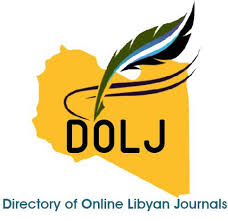Factors Influence Shivering Phenomenon Post Spinal Anesthesia
DOI:
https://doi.org/10.54361/Ljmr18-1.05Keywords:
Shivering, Postoperative, Complications, Tramadol, Spinal, AnesthesiaAbstract
Background: Shivering is a prevalent complication encountered by patients following anesthesia. The incidence of shivering after anesthesia can be influenced by factors such as age and the temperature of the operating room. The aim of this study was to compare the occurrence of shivering during surgical procedures among patients who experienced no shivering and those who did. Methodology: data from 60 patients who underwent spinal surgery under anesthesia. We divided them into two groups: 30 without shivering (Group A) and 30 treated with tramadol for shivering (Group B). Results: incidence of shivering among younger patients (<30 years of age). Furthermore, shivering was observed during blood transfusion, and high incidence with patient had undergone a cesarean section (36.7%), in those who received cold liquid during the operating (73.3%), and in those who had not undergone previous surgery (73.3%). Moreover, there were significant correlations between shivering and factors such as age, temperature range during and after the operation (°C), and the condition of the administered liquid during the procedure. Conclusion: the occurrence of post anesthesia shivering in relation to various demographic and procedural factors. The range of age and temperature during and after the operation showed a significant association with the incidence of shivering.
Downloads
References
National Guideline Alliance (UK). Prevention and management of hypothermia and shivering: Caesarean birth: Evidence review C. London: National Institute for Health and Care Excellence (NICE); 2021.
De Witte J, Sessler DI. Perioperative shivering: physiology and pharmacology. Anesthesiology. 2002;96(2):467-84.
Bhatnagar S, Saxena A, Kannan TR, Punj J, Panigrahi M, Mishra S. Tramadol for postoperative shivering: a double-blind comparison with pethidine. Anaesth and intensive care. 2001;29(2):149-54.
Sessler D I. Temperature Monitoring. In: Miller RD, editor. Textbook of Anaesthesia. 7th ed. Churchill Livingstone, Philadelphia.2010: 1533-1556.
Eberhart LH, Döderlein F, Eisenhardt G, Kranke P, Sessler DI, Torossian A, Wulf H, Morin AM. Independent risk factors for postoperative shivering. Anesth Analg. 2005;101(6):1849-57.
Alneli GR. Anesthesia and pain management drugs used in Libyan hospitals and clinics. Libyan Journal of Medical Research. 2023;17(1):133-45.
Hoshijima H, Takeuchi R, Kuratani N, Nishizawa S, Denawa Y, Shiga T, Nagasaka H. Incidence of postoperative shivering comparing remifentanil with other opioids: a meta-analysis. J Clin Anesth. 2016;32:300-12.
Alnaeli GR, Hwisa SA, Alhuwayj KA, Elmaggoze SA. The impact of adding fentanyl to bupivacaine on spinal anesthesia for caesarean. Libyan Journal of Medical Research. 2023;17(2):108-17.
Bhatnagar S, Saxena A, Kannan TR, Punj J, Panigrahi M, Mishra S. Tramadol for postoperative shivering: a double-blind comparison with pethidine. Anaesth and intensive care. 2001;29(2):149-54.
Alfonsi P. Postanaesthetic shivering. Epidemiology, pathophysiology and approaches to prevention and management. Minerva Anestesiol. 2003;69(5):438-42.
Zhang Y, Wong KC. Anesthesia and postoperative shivering: its etiology, treatment and prevention. Acta Anaesthesiol Sin. 1999;37(3):115-20.
Abdelrahman RS. Prevention of shivering during regional anaesthesia: comparison of Midazolam, Midazolam plus Ketamine, Tramadol, and Tramadol plus Ketamine. Life Sci J 2012; 9: 132-9.
Lopez MB. Postanaesthetic shivering - from pathophysiology to prevention. Rom J Anaesth Intensive Care. 2018; 25: 73-81.
Xu R, Hu X, Sun Z, Zhu X, Tang Y. Incidence of postoperative hypothermia and shivering and risk factors in patients undergoing malignant tumor surgery: a retrospective study. BMC anesthesiol. 2023;23(1):31.
Ferede YA, Aytolign HA, Mersha AT. “The magnitude and associated factors of intraoperative shivering after cesarean section delivery under Spinal anesthesia’’: A cross sectional study. Ann of Med Surg. 2021;72:103022.
Badawy AA, Mokhtar AM. The role of ondansetron in prevention of post-spinal shivering (PSS) in obstetric patients: A double-blind randomized controlled trial. Egyptian Journal of Anaesthesia. 2017;33(1):29-33.
Usta B, Gozdemir M, Demircioglu RI, Muslu B, Sert H, Yaldız A. Dexmedetomidine for the prevention of shivering during spinal anesthesia. Clinics. 2011;66(7):1187-91. Usta B, Gozdemir M, Demircioglu RI, Muslu B, Sert H, Yaldız A. Dexmedetomidine for the prevention of shivering during spinal anesthesia. Clinics (Sao Paulo). 2011 Jul 1;66(7):1187-91.
VASSILIEFF, N.; ROSENCHER, N.; SESSLER, D. I.; CONSEILLER, C. Shivering Threshold During Spinal Anesthesia Is Reduced in Elderly Patients. Survey of Anesthesiology.1996. 40(5):p 290.
Munday J, Hines S, Wallace K, Chang AM, Gibbons K, Yates P. A systematic review of the effectiveness of warming interventions for women undergoing cesarean section. Worldviews Evid Based Nurs. 2014;11(6):383-93.
Qi X, Chen D, Li G, Cao J, Yan Y, Li Z, Qiu F, Huang X, Li Y. Risk factors associated with intraoperative shivering during caesarean section: a prospective nested case-control study. BMC anesthesiology. 2022 Dec;22(1):1-0.
Rajagopalan S, Mascha E, Na J, Sessler DI. The effects of mild perioperative hypothermia on blood loss and transfusion requirement. Anesthesiology. 2008;108(1):71-7.
Jun JH, Chung MH, Jun IJ, Kim Y, Kim H, Kim JH, Choi YR, Choi EM. Efficacy of forced-air warming and warmed intravenous fluid for prevention of hypothermia and shivering during caesarean delivery under spinal anaesthesia: A randomised controlled trial. Eur J Anaesthesiol. 2019;36(6):442-8.
Meghana VS, Vasudevarao SB, Kamath SS. The effect of combination of warm intravenous fluid infusion and forced air warming versus forced air warming alone on maternal temperature and shivering during cesarian delivery under spinal anesthesia. Ann Afr Med.
Downloads
Published
Issue
Section
License
Copyright (c) 2024 Ghada Rajab Alnaeli , Sara A Hwisa , Salaheddin Ali Etomy Elmaggoze , Aboajela Ramadan Ajaj , Suhila Alkayakh (Author)

This work is licensed under a Creative Commons Attribution-NonCommercial-NoDerivatives 4.0 International License.
Open Access Policy
Libyan journal of medical Research (LJMR).is an open journal, therefore there are no fees required for downloading any publication from the journal website by authors, readers, and institution.
The journal applies the license of CC BY (a Creative Commons Attribution 4.0 International license). This license allows authors to keep ownership f the copyright of their papers. But this license permits any user to download , print out, extract, reuse, archive, and distribute the article, so long as appropriate credit is given to the authors and the source of the work.
The license ensures that the article will be available as widely as possible and that the article can be included in any scientific archive.
Editorial Policy
The publication of an article in a peer reviewed journal is an essential model for Libyan journal of medical Research (LJMR). It is necessary to agree upon standards of expected ethical behavior for all parties involved in the act of publishing: the author, the journal editorial, the peer reviewer and the publisher.
Any manuscript or substantial parts of it, submitted to the journal must not be under consideration by any other journal. In general, the manuscript should not have already been published in any journal or other citable form, although it may have been deposited on a preprint server. Authors are required to ensure that no material submitted as part of a manuscript infringes existing copyrights, or the rights of a third party.
Authorship Policy
The manuscript authorship should be limited to those who have made a significant contribution and intellectual input to the research submitted to the journal, including design, performance, interpretation of the reported study, and writing the manuscript. All those who have made significant contributions should be listed as co-authors.
Others who have participated in certain substantive aspects of the manuscript but without intellectual input should only be recognized in the acknowledgements section of the manuscript. Also, one of the authors should be selected as the corresponding author to communicate with the journal and approve the final version of the manuscript for publication in the LJMR.
Peer-review Policy
- All the manuscripts submitted to LJMR will be subjected to the double-blinded peer-review process;
- The manuscript will be reviewed by two suitable experts in the respective subject area.
- Reports of all the reviewers will be considered while deciding on acceptance/revision or rejection of a manuscript.
- Editor-In-Chief will make the final decision, based on the reviewer’s comments.
- Editor-In-Chief can ask one or more advisory board members for their suggestions upon a manuscript, before making the final decision.
- Associate editor and review editors provide administrative support to maintain the integrity of the peer-review process.
- In case, authors challenge the editor’s negative decision with suitable arguments, the manuscript can be sent to one more reviewer and the final decision will be made based upon his recommendations.













